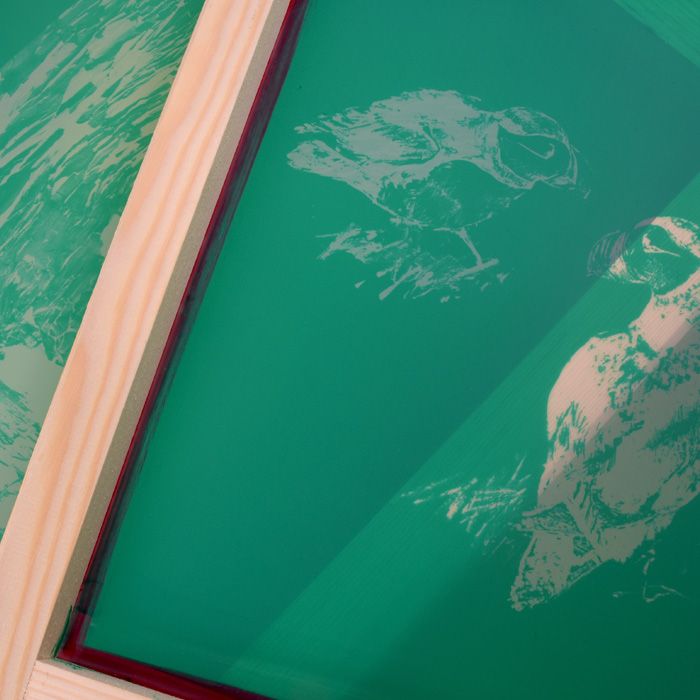High-End Silk Screen Printing for Premium Garments
High-End Silk Screen Printing for Premium Garments
Blog Article
Display Printing Uncovered: Every Little Thing You Required to Find Out About Tee and Garment Printing Techniques
Display printing is an interesting technique that integrates art with technique, offering countless opportunities for imagination. Prepared to explore the vital elements that make screen publishing an art type?
The Fundamentals of Screen Printing: Exactly How It Works
When you plunge right into display printing, you'll find it's both a scientific research and an art. At its core, screen printing involves creating a pattern, or screen, that permits ink to pass with only in specific locations (screen printing kit). You start by choosing your layout and preparing your display with a light-sensitive emulsion. As soon as you subject this emulsion to light, it sets, leaving your layout as an adverse room.
Next, you'll mix your inks and prepare your printing surface. Placement the display over the textile, after that make use of a squeegee to push ink through the screen onto the garment. This process calls for accuracy, as you desire clear, vibrant prints. After printing, you'll cure the ink with warmth, guaranteeing it follows the fabric and lasts with laundries. Each action is vital, and mastering them will certainly boost your screen printing skills, changing simple garments right into distinct, expressive pieces.
Kinds Of Screen Printing Strategies
Once you grasp the fundamentals of display printing, it's time to explore the numerous strategies that can boost your layouts. One popular method is standard display printing, where ink is pushed via a stenciled display.
If you're aiming for great details, think about discharge printing. This method eliminates color from the fabric, leaving a soft, vintage appearance. One more option is plastisol printing, understood for its resilience and vivid shades, making it a favorite for numerous brands. Experiment with halftone printing to produce slope impacts and intricate designs. Each strategy has its one-of-a-kind appeal, so do not hesitate to attempt them bent on discover what suits your style best!
Important Devices for Screen Printing
To achieve stunning outcomes in screen printing, having the appropriate devices is essential. You'll need a durable screen printing structure, which holds the mesh that transfers your design onto the garment. Next, spend in high-grade mops; these are essential for applying ink equally throughout the display.
Choosing the Right Inks and Products
When picking inks and products for screen printing, you need to consider the sort of ink that functions finest for your project. Think of fabric compatibility to guarantee your layouts look last and excellent lengthy. Explore eco-friendly ink alternatives to make your printing procedure more sustainable.
Kinds of Display Inks
Selecting the appropriate display ink is vital for achieving lively, sturdy prints that fulfill your job's demands. There are a number of kinds of display inks to examine. Specialized inks, such as glow-in-the-dark or metallic, can add distinct results to your styles.

Material Compatibility Considerations
Recognizing textile compatibility is vital for accomplishing high-grade display prints, specifically because different materials react distinctly to different inks. Always check your inks on sample material to guarantee they stick correctly and maintain color honesty. Additionally, maintain in mind that textile weight and structure can influence the final outcome, so picking the best ink and material combo is vital for your project's success.
Eco-Friendly Ink Options
Green inks are coming to be a popular selection for screen printers that desire to reduce their ecological influence while keeping quality. When choosing inks, think about water-based inks, which are less damaging and less complicated to clean up compared to traditional solvents.
In addition, search for inks made from eco-friendly sources, such as soy or vegetable-based options. By selecting the best inks and products, you'll not just produce magnificent layouts but likewise add to an extra sustainable printing procedure. Make the switch, and your prints will show your dedication to the setting!
Preparing Your Layout for Display Printing

File Format Demands
To guarantee your style looks sharp and lively on textile, you'll require to pay attention to file layout demands for display printing. Start with vector files like AI or EPS, as they can be scaled without losing quality. If you utilize raster images, decide for high-resolution data, such as TIFF or PNG, ideally at 300 DPI. Stay clear of utilizing JPEGs, as they can shed clarity when resized. Make sure your style has a transparent history to prevent undesirable white sides on your prints. Maintain color settings in mind; CMYK is conventional for screen printing, so transform article your RGB develops appropriately - screen printing kit. By complying with these standards, you'll set your artwork up for an effective print.
Shade Splitting Up Strategies
Color splitting up is a necessary step in preparing your design for screen printing, and grasping it can considerably boost your print high quality. You'll require to damage your style into private shades, as each shade needs a different display throughout printing. Start by determining all the shades in your layout and develop layers for each one. You can make use of software application like Adobe Photoshop or Illustrator to separate and separate shades effectively. Be certain to conserve each layer as a different data, Read More Here typically in a layout like TIFF or PSD. This precision not just ensures exact color depiction but additionally improves the printing procedure. By taking notice of shade separation, you'll accomplish professional and dynamic results in your screen-printed garments.
Resolution and Size
Achieving the finest results in screen printing begins with guaranteeing your design has the right resolution and size. Ideally, your artwork ought to go to least 300 DPI (dots per inch) for sharp, clear prints. If you use reduced resolution, your end product might look unprofessional and pixelated.
When it pertains to size, take into consideration the measurements of your print area. Design your artwork to match the last print size, preferably producing it in the real dimensions you'll be publishing. This method, you'll stay clear of any type of unanticipated scaling problems.
Constantly check your design in both vector and raster styles. Vector graphics can be scaled without shedding high quality, making them suitable for screen printing. Preparing correctly will guarantee your style looks remarkable on every garment!
Step-by-Step Display Printing Process
Screen printing is a dynamic process that permits you to develop dynamic layouts on numerous surfaces. To begin, you'll need a screen, emulsion, and your selected ink. Prepare your screen by cleansing it completely. Next off, apply the emulsion evenly and let it completely dry in a dark area. Once completely dry, reveal your screen to light with your design positioned on it, which will certainly harden the solution where the light hits, creating a stencil - screen printing kit.
Put ink onto the screen and use a squeegee to press the ink with the stencil onto the fabric. Raise the display thoroughly and let the print completely dry. You have actually efficiently screen printed your style.
Tips for Effective Display Printing Projects
While you're diving into your display printing jobs, bear in mind that prep work is vital to success. Begin by gathering all your materials-- inks, mops, garments, and screens. A clean work space assists prevent undesirable mistakes, so clean up prior to you start.
Following, confirm your art work is high-resolution and properly sized for your garment. Test your display for appropriate exposure and clean it extensively to stay clear of spots. When mixing your inks, comply with the maker's standards to accomplish the appropriate uniformity.
During printing, use also stress with your squeegee for regular results. Do not rush; take your time to verify each print meets your standards. After printing, allow your garments completely dry completely prior to taking care of or packaging them.
Finally, constantly maintain a sample of your work for future recommendation. This means, you can examine your development and improve your methods gradually. Happy printing!

Regularly Asked Inquiries
Just how Lengthy Does It Require To Establish a Screen Printing Job?
Establishing up a screen printing work commonly takes important link around 30 mins to an hour. You'll prepare the displays, mix inks, and readjust the press. The moment varies based upon intricacy and experience, so remain organized!
Can I Publish on Different Fabric Enters Making Use Of the Same Technique?
Yes, you can print on different textile types utilizing the very same technique, however you'll need to adjust your setups and inks. Some materials take in ink in a different way, so trying out guarantees the most effective outcomes for each material.
What Prevail Blunders to Stay Clear Of in Screen Printing?
When display printing, avoid usual errors like using the incorrect ink, ignoring appropriate direct exposure times, or avoiding pre-press checks. Always examine your setup and maintain clean displays to assure quality results each time.
Exactly How Can I Appropriately Clean and Preserve My Display Printing Devices?
To effectively clean and maintain your screen printing devices, you should on a regular basis clean screens with proper solvents, inspect squeegees for wear, and assure all devices are saved dry and dust-free. Uniformity enhances and avoids pricey fixings efficiency.
Is Screen Printing Eco-friendly Contrasted to Various Other Techniques?
Display printing can be a lot more ecologically pleasant than various other approaches, especially if you utilize eco-conscious products and water-based inks. By selecting sustainable products and techniques, you reduce waste and reduce your impact on the planet.
Display Printing Uncovered: Everything You Required to Know Concerning T-Shirt and Garment Printing Techniques
At its core, display printing includes producing a pattern, or display, that permits ink to pass with only in certain areas. Position the display over the material, then make use of a squeegee to push ink through the display onto the garment. One preferred approach is typical screen printing, where ink is pushed with a stenciled display.When picking inks and products for screen printing, you require to take into account the kind of ink that works best for your job.
Report this page